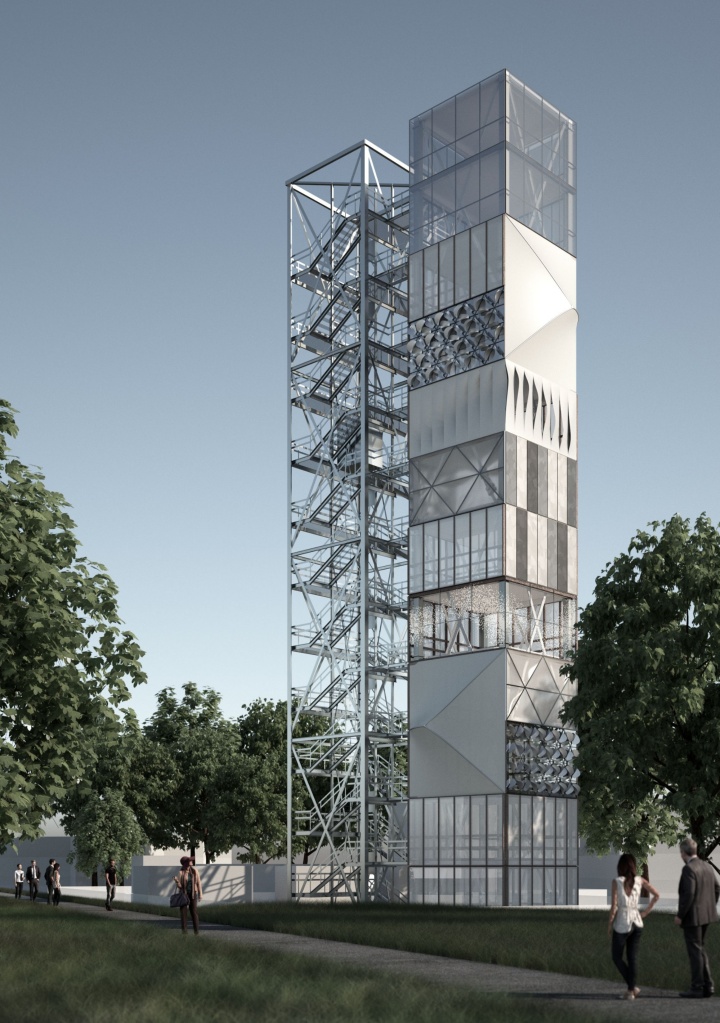On November 26, 2020, the German Research Foundation (DFG) granted an extension to the Collaborative Research Center (SFB) 1244 “Adaptive Skins and Structures for the Built Environment of Tomorrow” of the University of Stuttgart. Over the next four years, the SFB 1244 will demonstrate further possibilities of how more living space can be created emissions-free and using less material with the help of adaptive architecture. The University of Stuttgart is currently the host institution for six Collaborative Research Centers, including three Transregios.
In the second funding period, the position of speaker will pass from Prof. Werner Sobek (Institute of Lightweight Structures and Conceptual Design) to Prof. Oliver Sawodny (Institute for System Dynamics). Professor Oliver Sawodny emphasizes: “In the first funding period we were able to prove that our working hypothesis is true. By using adaptive skins and structures we can achieve a drastic reduction in waste, resources and emissions in the construction industry. The fact that the project has been extended underlines how significant our work is to society internationally.”
Building as a challenge and an opportunity
Construction is currently responsible for more than 50 percent of the resources consumed worldwide, which means that the current construction volume of over 1,000 tonnes per second is leading to bottlenecks in the supply of materials in more and more countries – one well-known example is the shortage of sand, which is needed for the production of concrete. Construction is also responsible for almost 40 percent of emissions which has a detrimental effect on the climate. The manufacture of concrete alone is responsible for almost three times as much greenhouse gas emissions as global air traffic.
The demand for living space is expected to continue to grow in the next few years due to the increase in global population, meaning that the most urgent ecological and societal challenges of our time come from the construction industry.
The SFB 1244 has been able to demonstrate in the last four years that significant savings can be made on building materials as well as the “gray energy” and gray emissions associated with it. These elements make it possible to change the structural and physical properties of materials and components in such a way that they can always be optimally adapted to different loads. This means that load-bearing structures can be produced using less material and less energy.
The first adaptive high-rise building in the world forms the centerpiece of the project
The results from the first funding period have been integrated into the first adaptive high-rise building in the world, which was constructed on the campus of the University of Stuttgart at the end of 2020. “The high-rise with muscles”, as it is known will continue to serve as a major experiment for researchers over the next four years by showing that the savings made on materials and emissions in construction can be increased further by using adaptive facades and flat components. The new kinds of support structures and facades can be adapted to external influences in a way which is self-regulating in order to use energy and mass intelligently. This type of adaptive architecture is also revolutionizing our understanding of architectural theory in terms of what we consider a building to be. The focus of the research is also therefore on rethinking the idea of a building as being a finished product, but instead as a construct that is constantly adjusting itself that functions as an intermediary between people and their surroundings.
Presenting solutions together
The Institute of Engineering Thermodynamics at the German Aerospace Center as well as other extra-university institutions will take part in the Collaborative Research Center over the next four years, alongside 14 institutions from the University of Stuttgart, researchers in the field of Architecture and Art at the HafenCity University Hamburg, the Art and Design department at the University of the Arts Bremen and the Holzkirchen and Stuttgart sites of the Fraunhofer Institute for Building Physics. The research network includes 23 different projects with over 50 researchers. It has been awarded more than 10 million euros in funding from the German Research Foundation over the next four years.
The knowledge gained and the findings made by the researchers will also be made available to as wide a public as possible at some point in the future. The demonstrator high-rise building will be opened to the public for guided tours for the next four years, and also forms part of the International Building Exhibition 2027 StadtRegion Stuttgart. The SFB 1244 is also part of the AdvanceAEC, a group of world-leading research networks in the field of construction, and therefore forms part of an international network for both industry experts as well as interested lay people. Furthermore, the SFB 1244 regularly invites interested members of the public to lectures and symposia.
Expert Contact:
Prof. Oliver Sawodny, University of Stuttgart, Institute for System Dynamics (ISYS), Tel. +49 (711) 685-66302/-66303, E-mail



